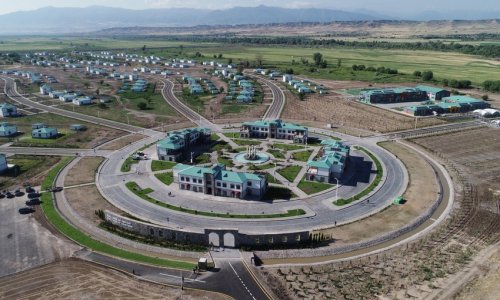Trans Adriatic Pipeline (TAP) is committed to transport gas within the second phase of Azerbaijani Shah Deniz field development project, TAP Head of Communications Lisa Givert told Trend.
Givert was commenting the possibility of Russia to use TAP for delivering its gas to the European countries.
Last week EurActiv reported citing Brendan Devlin, advisor in the European Commission’s DG energy (Directorate-General for Energy) that Russia can use TAP from a regulatory and political perspective, for shipping its gas to the EU countries, if the country builds the "Turkish Stream” pipeline.
He also said that it was unlikely another big pipeline except for the Southern Gas Corridor would appear in South Eastern Europe, because "the markets are too small” in the region, added that TAP has a provision for a 50-percent expansion in the event there is a shipper other than Azerbaijan, while Russia’s "Turkish Stream’s” capacity will be 63 billion cubic meters per year.
"TAP is fully committed to transport Shah Deniz phase II volumes from the Caspian through Greece, Albania and into Italy,” Givert said. "For any additional volumes that come on stream, TAP will comply with EU regulation and relevant sanctions,” she added.
The TAP project was selected by the consortium of Azerbaijani Shah Deniz field development as the transportation route to the European markets.
The approximately 870 km long pipeline will connect with the Trans Anatolian Pipeline (TANAP) near the Turkish-Greek border at Kipoi, cross Greece and Albania and the Adriatic Sea, before coming ashore in Southern Italy.
TAP’s shareholding is comprised of BP (20 percent), SOCAR (20 percent), Statoil (20 percent), Fluxys (19 percent), Enagás (16 percent) and Axpo (five percent). Construction of TAP is planned to begin in 2016.
The initial capacity of TAP will be 10 billion cubic meters per year, but it can easily be expanded to 20 billion cubic meters per year as the new volumes of gas come on stream.
In December, 2014, Russia initiated a new Turkish Stream project, designed for Turkey and consumers of EU countries. The pipeline has been proposed to be constructe across the Black Sea to Turkey with a projected capacity of 63 billion cubic meters of gas per year.
Of these, some 14 billion cubic meters of gas is intended for delivery to Turkey and the remaining volumes, about 50 billion cubic meters of gas, will be delivered to the trading hub on Turkish-Greece border.
ANN.Az
Follow us !











